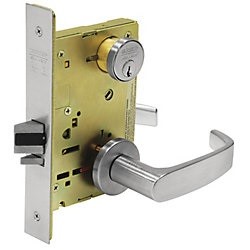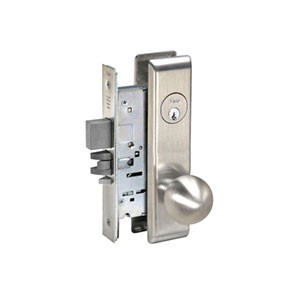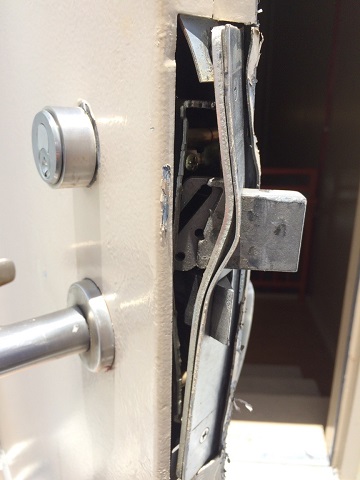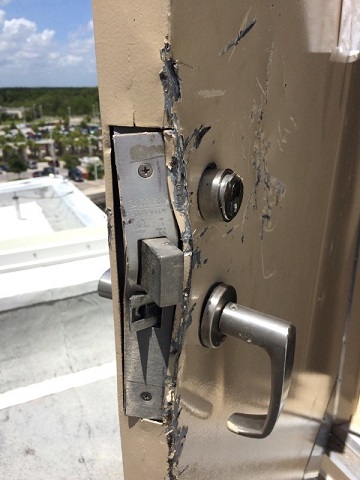When learning forcible entry the discussion of where to place the forks of your Halligan will inevitably come up. Your options are above the lock, below the lock or between the locks if there’s more than one. All options have their place but there is one particular type of locking mechanism where placing the fork in between the locks won’t work. Mortise locks (as pictured below) have been around since the 1800’s.


These locks get their name from the mortise or pocket that is required to be cut into the door for installation. They’re commonly found in older buildings, commercial buildings, high end residential or any place that requires a durable lock that will hold up to thousands of operations.
Sizing up a door for a mortised lock is difficult and has made me lean towards always placing my forks either above or below the locks and never between. If you are a strong believer in placing your forks between the locks then you should know that mortise locks normally don’t have escutcheon plates that are offset from the door more than a ¼”. This is because the lock cylinders are threaded into the mortised guts of the lock and this requires the installer to be able to spin the lock into position. Bored Cylinder locks are held together with screws and can be offset from the door greater distances.
If you haven’t figured out why you can’t place your forks in between the locks from the pictures above then take a closer look at an example of a door forced by Orlando (FL) Fire Department’s Tower 11 B shift crew.


Photos by: JJ Cassetta
This door had to be forced to allow smoke to ventilate from the upper floor of a hospital. It was inward swinging and set into a metal frame with concrete walls. As you can see if the forks were placed between the locks they would end up running into the deadbolt. This would prove to be very frustrating in smoky conditions and is the reason you should stay away from placing your Halligan there. Another option is pulling the cylinder using k-tool or other lock pulling tool. The mortised lock is a durable lock but the cylinder is only held in with two small set screws.

Jeremy Rubottom is currently a Firefighter with the Orlando (FL) Fire Department, assigned to the Heavy Rescue 1. Jeremy has been in the fire service for a total of 15 years. Prior to joining OFD, he was a Firefighter for the St. Johns County (FL) Fire Department for 5 years. He is an instructor at Valencia Fire Rescue Institute, working with the Truck Company Operations and Special Operations programs. Jeremy is a Georgia Smoke Diver and has taught at the Orlando Fire Conference for several years. He is also a H.O.T. Instructor for VentEnterSearch, LLC.

We just cut it with a K-12. No effert one and done.